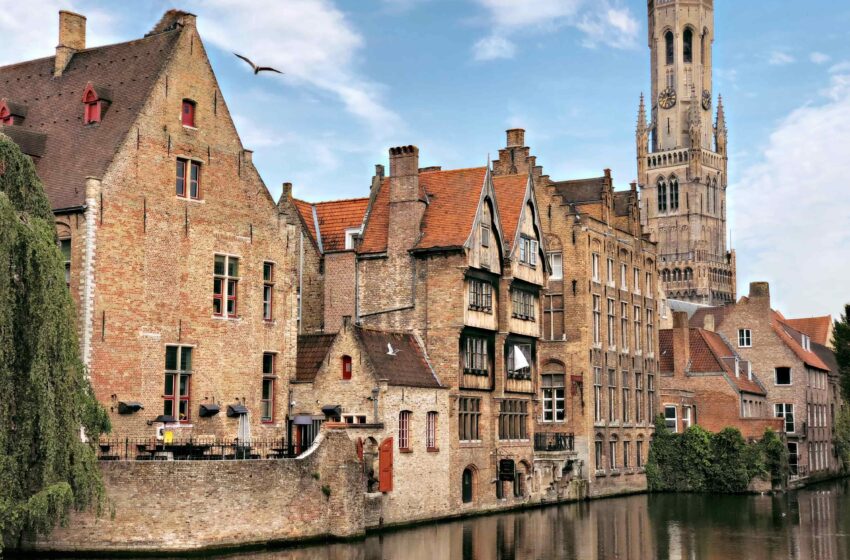
Belgium’s Only Travel Guide You Need For A Great Trip in 11 Easy Steps
- Destinations Europe
Cruisit Team
- May 18, 2022
- 0
- 4662
- 64 minutes read
Belgium’s Background
Belgium gained independence from the Netherlands in 1830, and Germany occupied it during World Wars I and II. It has thrived over the last half-century as a sophisticated, technologically advanced European state and NATO and EU member. Tensions between the Dutch-speaking Flemings of the north and the French-speaking Walloons of the south have resulted in constitutional revisions in recent years affording both areas legal status and autonomy.
What is now Belgium has been in the path of invaders since at least Roman times. For millennia, cities have been devastated and awful battles have fought, not just the last two. A lion statue atop a conical artificial hill overlooks the world-famous Waterloo battlefield, where Napoleon was eventually vanquished. In Flanders, apparently endless rows of white gravestones commemorate four years of WWI suffering. Furthermore, haunting ancient prison camps and various museums respectfully recall those who died in WWII, the later phases of which included Hitler’s lethal ‘Battle-of-the-Bulge’ counter-attack in the Ardennes.
For good reason, Belgium was chosen as the European Union and NATO headquarters: its cuisine and liquor! After all, diplomacy is a business desperate for good food and drinks.
Belgium’s greatest lures are its medieval town centers, which are home to multiple Unesco World Heritage sites and countless superb cafe-bars serving some of the world’s best beers. Stalactite-filled tunnels, post-industrial history, forest-edged kayaking rivers, bucolic chateaux, and sandy North Sea beaches are also available. Cutting-edge museums and beautifully funded galleries depict the tangled history of what has been a furnace of European art, from the Flemish Primitives to Rubens’ sensual nymphs and Art Nouveau’s twisted curves, bizarre surrealism, comic strips, and 21st-century fashion. Belgium is also home to some of the world’s craziest carnivals.
Belgians are passionate foodies who appreciate their country’s cuisine. It’s always wonderful, whether it’s a quick snack like fries (smothered in sauce), a savory dish like mussels, or a sweet dessert-like one of their world-famous waffles. And you can wash it all down with one of the country’s hundreds, if not thousands, of distinct beers. Walking down any random street in Brussels may clog your arteries, but you’ll soon forget about it when you buy another box of Belgium chocolates from one of the many chocolatiers.
“Belgium is a gorgeous nation with a rich history, charm, antique architecture, and, most importantly, delicious cuisine.“
Despite its tiny size, Belgium is a country of dramatic contrasts: linguistic, cultural, and topographical. The majority of the old “art” cities are in generally flat, Dutch-speaking Flanders, enticing visitors with medieval belfries, charming market squares, and step-gabled structures that typically overlook lovely urban canals. These wonderful museums and galleries are close together and easily accessible by public transit. Despite several intriguing post-industrial cities, much of hilly, French-speaking Wallonia is still largely rural. Having your own transportation is useful for going to the region’s stunning caverns, towering castles, and pastoral valleys, where there is endless outdoor enjoyment to be had.
Overall, being active is critical if you don’t want to gain weight while in Belgium. Fortunately, whether you are interested in sports or culture, there is enough to see and do. Visit medieval Ghent or Bruges, hike the Ardennes, learn to play the saxophone in Dinant, learn about the European Union and interact with authorities in Brussels, ponder on the sorrows of war in Ypres and its poppy fields, and cycle from one brewery to the next to work off those calories!
You may believe that this little country has nothing to offer, yet this is precisely why it is attractive, It packs a punc. With one of Europe’s most beautiful canal towns, breathtaking architecture, an enthralling history, and, of course, great Belgian food–most notably Belgian chocolate, Belgian waffles, Belgian beer, and Belgian Frites – no, it was never French.
- Medieval Bruges (aka Brugge) is hard to beat in terms of beauty. Stroll its cobblestoned streets and watch the reflections of its ancient houses in its canals.
- Ghent (aka Gent) is a less touristy version of Bruges, which is reason enough not to skip
- Peruse the diamond district in Antwerp (aka Antwerpen) in search of a ring for your fiancée, or just enjoy some Flemish fries (yes, Belgians invented fries, not the French!) and a bustling nightlife.
- Stop by Ypres and listen to the Last Post, played precisely at 8 o’clock every evening, beneath the Menin Memorial Gate in respect of the soldiers who gave their life in World War One at Ypres
- Learn about the European Union in Brussels (or Brussel, aka Bruxelles), then finish the day with some good food and (maybe) a pub crawl to sample one of the numerous beers available on the Grand Place.
- Hike off all that food in the Ardennes, then stop at Spa for hot springs and delicious mineral water, as well as a peek at the neighboring Formula 1 racing circuit.
- Stroll around Wallonia’s majestic Namur, or learn all you ever wanted to know about the saxophone in Dinant, the birthplace of Adolphe Sax.
- Visit Liège (also known as Luik), a medieval city on the Meuse River and the birthplace of Emperor Charlemagne.
- Visit one of Belgium’s six Trappist breweries, such as Rochefort, Chimay, Westmalle, or d’Orval, and learn about beer brewing from monks.
- Take a bath in the frigid North Sea or explore historic Zeebrugge, which has a fish market.
- Belgians in the north speak Dutch, and French in the south and Brussels is officially multilingual. English, on the other hand, is commonly spoken, particularly in international Brussels.
- Don’t bring up French fries in Belgium; they were never French; that distinction should belong to Belgium.
- Even though it appears appealing, do not drink the water from the Ardennes’ little rivers and streams!
- The north of Belgium is quite flat, making cycling an affordable and healthful mode of transportation.
- Dine and sip! That is what Belgium is all about.
- Get a Belgian city tourist card which can save you a ton!
- If you’re a student, have your ISIC (student card) ready it saves you up to 50% off many things.
- Water in Belgium is safe to drink from the tap
Crime & Scams
Belgium is generally a safe place for travel, however there is a bit of crime here and there. While not an full of alarming crime but there have been reports of petty crimes such as muggings, bag snatching, and pickpocketing commonly in tourist areas, so it’s important to use common sense when you’re out and about.
In Brussels, be wary in Schaerbeek, Brussels North, Brussels Center, Molenbeek and Anderlecht.
There have been reports of visitors being threatened with violence in the popular Parc de Bruxelles/Warandepark, between the Royal Palace and Belgian Parliament (known as Parc Royale). If you are robbed in this part of town, there is a police station next to the gate in front of the Belgian Parliament, on the right side as you leave the park. Most of the policemen here speak French, Dutch and English.
In Antwerp, avoid the areas around the port and docks. The cities of Bruges and Ghent are also petty crime hotspots.
Health
The Belgian healthcare system is one of the best in Europe with one of the most highly-rated healthcare professionals in Europe. It is divided into state and private sectors, with fees payable in both.
Before every trip, make sure you are up to date on all routine vaccinations. Among the key recommended vaccines globally are chickenpox (Varicella), diphtheria-tetanus-pertussis (DTP), influenza (flu), measles-mumps-rubella (MMR), polio, and shingles.
When visiting Belgium, certain nationals are required to purchase travel medical insurance. It is optional for US citizens, however, it is always important to have comprehensive medical coverage when traveling because you never know what you could encounter while overseas.
Shoulder Seasons
The shoulder season lasts from April to June and September to October, when the entire country enjoys bright sunlight and lovely afternoons. Because it is the shoulder season, the crowds should be light–except on weekends, when many Britons and Europeans visit Ghent and Bruges. Prices for flights and accommodations in Belglium fall during this time period.
High (Peak) Season
The summer months of June to August are the busiest for tourists in Brussels, with the most outrageous prices. Tourists crowd the city’s streets, and long lines form outside prominent attractions on a daily basis. Furthermore, this season features two of the city’s most popular annual events. Of course, this is also the most costly period to purchase plane tickets and hotel accommodations.
Off-Season
The low season begins in November and lasts until March, when the weather is unsuitable for any activity other than winter sports. This is the time of year with the lowest costs for travel, whether purchasing flights or lodging.
By Plane
Brussels Airport (BRU), located a few miles outside of Brussels, is the most popular international airport for international flights to Belgium. Trains and buses to other domestic cities are available, as are flights to overseas destinations. Nonstop flights to Belgium are available from United, Austrian Airlines, Lufthansa, Air Canada, Brussels Airlines, SWISS, Qatar Airways, and Thai Airways.
By Train
You could take a train from Paris to Brussels, which normally takes 1h 27m but can be completed in 1h 22m on the quickest services. London, Amsterdam, Cologne, Düsseldorf, and Frankfurt also offer direct trains to Brussels.
By Car
In order to combat air pollution, the Brussels Low Emission Zone (LEZ) is expanded to include the restriction of numerous vehicles from entering the nation, beginning in 2022. Having said that, you can enter the nation by any of the several checkpoints located between the borders. Random border inspections may be conducted for those coming in Belgium with their own automobiles.
You can simply drive your car from one nation to another in Europe. However, Belgium’s immediate neighbors include France, Luxembourg, the Netherlands, and Germany, all of which have checkpoints between their borders.
By Bus
Almost every European country has bus companies that run to Belgium; tickets start at roughly $9. Blablabus, Sindbad, RegioJet, and FlixBus run all of the many routes into Brussels from various European nations.
By Boat
Direct ferries from Dover, UK to Dunkirk, France run 5 times a day from 4 p.m. to midnight at 12 a.m. and cost roughly $100. You can then take any mode of transportation to Brussels or any other place you desire to visit.
The greatest yachting facilities in Belgium are centered around the ports of Ostend, Zeebrugge, Nieuwpoort, and Antwerp for yacht owners desiring to dock.
By Plane
Domestic flights between Belgian cities are limited due to the country’s small size. Brussels Airport is Belgium’s primary airport. Other significant airports in Belgium include Ostend-Bruges International Airport, Brussels South Charleroi Airport, Liege Airport, and Antwerp International Airport, all of which provide flights to destinations across Europe and beyond. Almost all Belgian cities are conveniently accessible by swift public transportation. This indicates that flying is the least popular mode of transportation in Belgium.
By Train
Belgium boasts a broad and efficient rail network that provides the most convenient method to go about the nation. Brussels and Antwerp have great urban rail networks, and Brussels also has a metro system, which is the most convenient method to get to the city. Also, ask for day or week passes which can save you a lot on transportation.
By Car
With such an extensive public transportation network, most expats in Belgium will discover that owning a car is unnecessary. Those who want to drive their own car will discover that driving in Belgium is simple.
Belgium’s roads are typically in good condition. All major towns and cities are linked by toll-free highways. The road signs, which may be perplexing at times, may take some time for foreigners to adjust to. Road signs in Belgian towns are normally multilingual, while in more rural regions, road signs are usually inscribed in either French or Flemish. This can be perplexing because place names in French and Flemish are spelled differently, and signage may abruptly switch from one language to the other, depending on which region you’re in.
Non-EU drivers can lawfully drive for up to six months on their home license or an international driving license if their permit is not in English. Following that, they will require a local license. Some countries have exchange agreements with Belgium that allow residents to easily exchange their foreign license for a local license. Expats from countries without such agreements will have to take a test to obtain a local license.
By Taxi
Taxis are abundant in Belgian towns and cities, with various private businesses providing services. Taxis are not all the same, although they can typically be recognised by the taxi sign on the roof. Metered taxis typically operate in various zones and charge varying fees. Before embarking on a voyage, it is essential to discuss the fare.
Uber is also available and can be used to get to and from the airport and train stations depending on where you are staying during your Belgium vacation.
By Bus
Belgium has a well-developed bus network for both intercity travel and intracity transportation. Buses, on the other hand, are not as popular for moving across Belgium as railroads.
By Metro
The tram and metro are the best ways to navigate the city. They face little or no interference from other modes of transportation and transport you safely and promptly to a variety of metropolitan locations. Trams are available in the cities of Brussels, Antwerp, Ghent, and Charleroi. Brussels’ tram is connected to the metro system, making it a handy mode of transportation across the city.
In Belgium, there are six main mobile providers. A Belgian SIM card is available in Proximus, Orange, BASE, and Carrefour outlets. SIM cards are also sold by resellers such as Carrefour (Express) (especially for the MVNOs). They are also available at Brussels Airport (Zaventem) (BRU). Prices begin around $12.
Other Europeans coming to Belgium can use their SIM cards; the charges are little more than you’re used to, but they’re capped and fair. A 2017 law established that anyone from the EU can use their phone anywhere they are in the union for free.
You may also get a prepaid eSim card from a company like Airalo, SIMCorner, or Nomad. All the providers offer data-only plans that may be used with an eSim-enabled phone, so make sure your phone is compatible. It is also possible to sign up for a Solis WiFi Hotspot. Check before you travel because they only serve select areas. Airalo provides the most extensive coverage of over 180 nations.
Local Internet & WiFi
Belgium has an advanced Internet infrastructure, ranking among the top nations in terms of total Internet users. The majority of tourist sites in Brussels provide free wifi. Museums, shopping malls, monuments, and even parks provide free WiFi stations. Wifi is included in practically all hotels, hostels, and other housing alternatives.
Top Places in Belgium

Grote Markt
The Grand Place, also known as the Grote Markt, is Brussels, Belgium’s principal plaza. The square is 68 by 110 meters in size and is totally paved. During the Nine Years’ War, during the shelling of Brussels by French soldiers in 1695, the majority of the plaza was devastated. The square’s cultural importance was uncovered in the mid-nineteenth century, and it was extensively rebuilt. It is bordered by lavish Baroque guildhalls of the ancient Guilds of Brussels, as well as two bigger edifices; the city’s Flamboyant Town Hall, and the neo-Gothic King’s House or Bread House structure, which houses the Brussels City Museum.
Atomium
The Atomium is a landmark structure in Brussels, Belgium that was built for the 1958 World’s Fair. It is 102 meters tall and was designed by engineer André Waterkeyn and architects André and Jean Polak. Its nine 18-meter-diameter stainless steel-clad spheres are linked in the configuration of a unit cell, which might represent an iron crystal multiplied 165 billion times. The exhibition was place on the Heysel/Heizel Plateau near Laeken. It is now the most popular tourist destination in Brussels, serving as a museum, an art center, and a cultural venue.


Manneken Pis
Manneken Pis is a 61-centimeter bronze sculpture in downtown Brussels showing a nude little boy peeing into the fountain’s basin. It is one of the most well-known icons of Brussels and Belgium. Jérôme Duquesnoy the Elder, a Brabantine sculptor, created it and had it installed in 1618 or 1619. The existing statue is a reproduction from 1965. The original may be seen at the Brussels City Museum.
Ardennes
The Ardennes are vast forests, rugged terrain, rolling hills, and ridges in Belgium and Luxembourg that stretch into Germany and France. The mountain is a western extension of the Eifel; both were formed during the Devonian Givetian era. The Ardennes’ forests and rivers produced the charcoal that allowed Wallonia’s great industrial boom in the 18th and 19th centuries.


The Royal Palace
The Royal Palace of Brussels is the official residence of Belgium’s King and Queen. It is located in the heart of Brussels, Belgium’s capital, however, it is not utilized as a royal home. The current building’s primary core dates from the late 18th century. However, the grounds on which it sits were previously part of the Coudenberg Palace, a Middle Ages palace complex.
3-day Itinerary in Belgium (with extension options)
Day 1
Arrive at Bruges
Beautiful Bruges is renowned as one of Europe’s most beautiful little cities, and some people refer to it as the “Venice of the North.”
Of course, it’s no Venice, but it has its glam with its beautiful canals in its own right, and–despite its touristic reputation and crowds during peak season it still has its charm.
Begin with a canal cruise. The canals of Bruges are very stunning, and like other canals, they are best appreciated from the boat.
Canal excursions in Bruges are inexpensive, and because the canals are narrow, they take place in little boats that are tranquil to ride in–nothing like the massive barge-like contraptions found in Amsterdam.
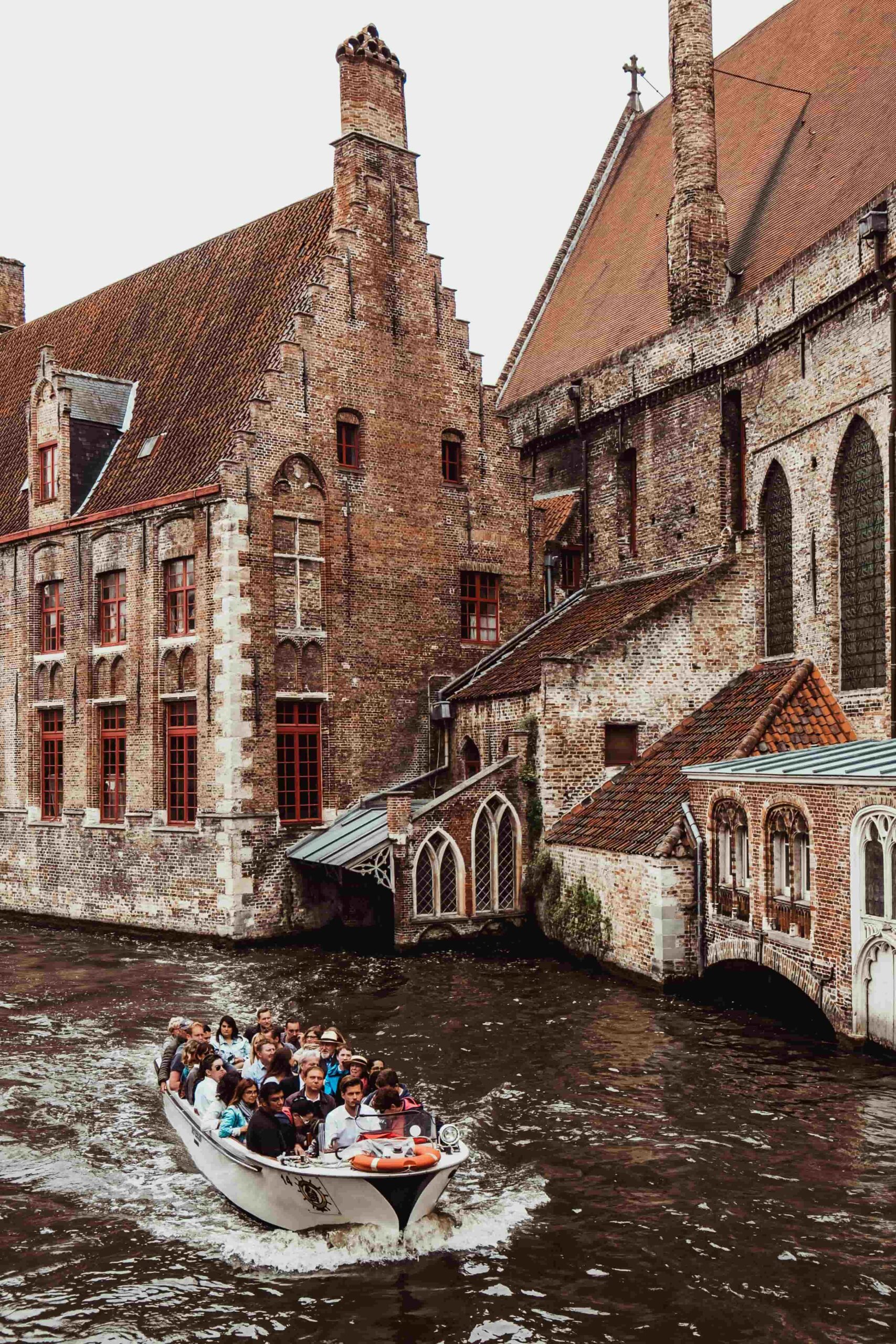
You will enjoy your canal ride and will be delighted you opted to begin your first vacation to Belgium with one.
Do you want stunning views of the city? Climb the Bruges Belfry. The finest of the best may be had for 12 Euro and a 366-step hike at Bruges’ Belfry.
If you try to photograph the Belfry from the foot of the tower, don’t be shocked if you don’t capture it quite right–the belfry truly leans to the east!
Wander around the charming alleys of Bruges. Bruges is stunning, and strolling aimlessly about town is a wonderful way to spend a day.
The Basilica of Holy Blood, Bruges’ Town Hall, Bruges’ windmills, filming locations from the movie “In Bruges”, and the gorgeous Minnewater Lake are all worth seeing.
There are numerous peaceful corners and great canal vistas to be found along the journey, so have your camera handy!
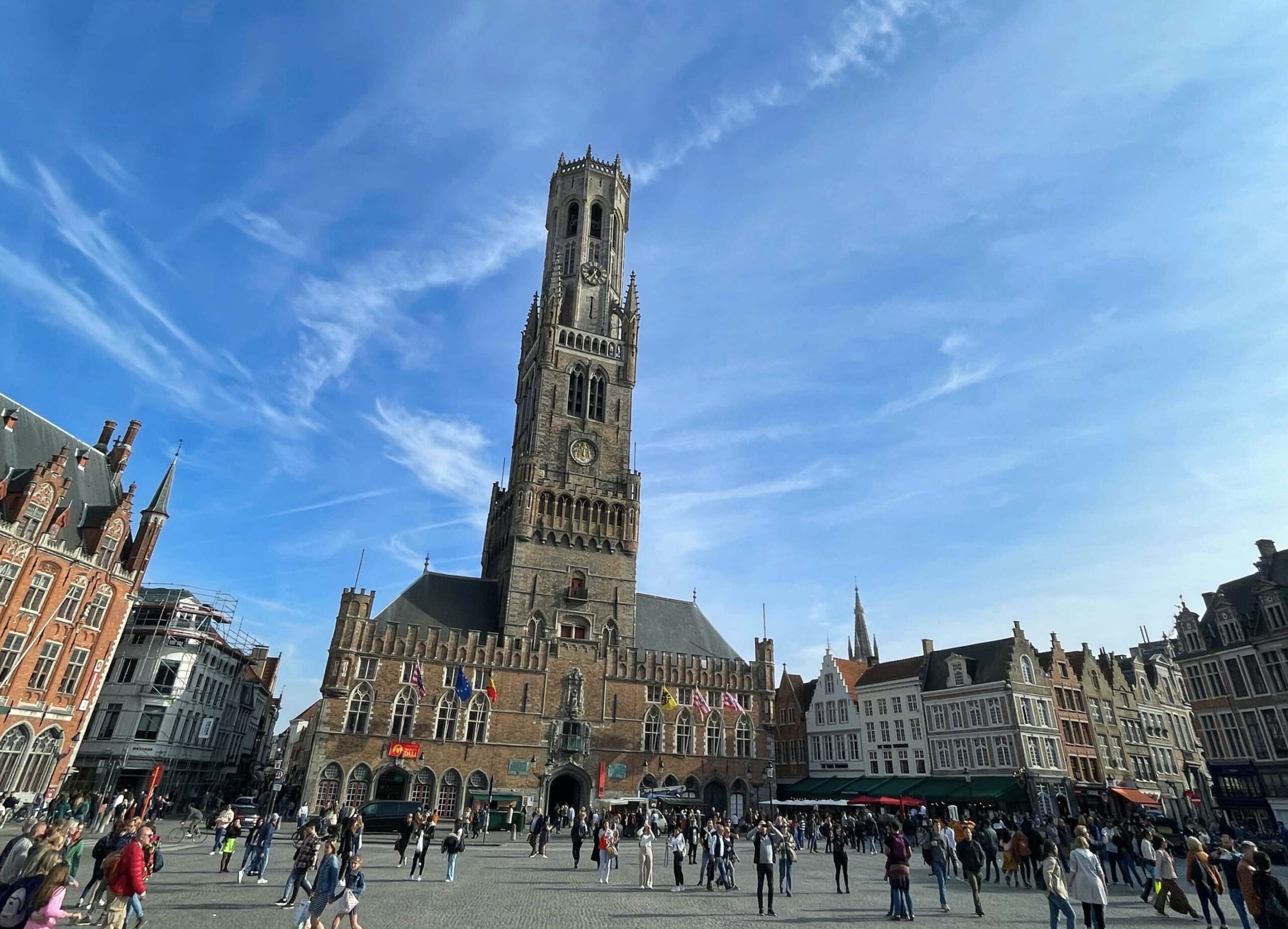

From Bruges, Ghent is 20-30 minutes away by train and Brussels is about an hour away by train, so there’s no need to move around if you don’t want to!
- Backpacker:
- Budget: Hotel Notre Dame
- Mid-range: The Black Swan Hotel
- High end: Relais Bourgondisch Cruyce
This section will be added shortly.
This section will be added shortly.
Day 2
Head to Ghent
Ghent is a student town at heart, full of canals, gorgeous, peaceful nooks, and street art, and is sometimes promoted as a (slightly) more cheap and less-touristy alternative to Bruges.
On the surface, the two cities are pretty similar, but Ghent has a more quirky atmosphere than Bruges’ Disneyland-like scenic splendor. So be sure to see these locations on your visit to Ghent.
Begin by looking at Gravensteen. Gravensteen Castle is the place to go if you want to see a castle that seems like it belongs in a storybook. Gravensteen, which dates back to the 10th century and is located exactly next to one of Ghent’s canals, is a grand and spectacular sight to witness.

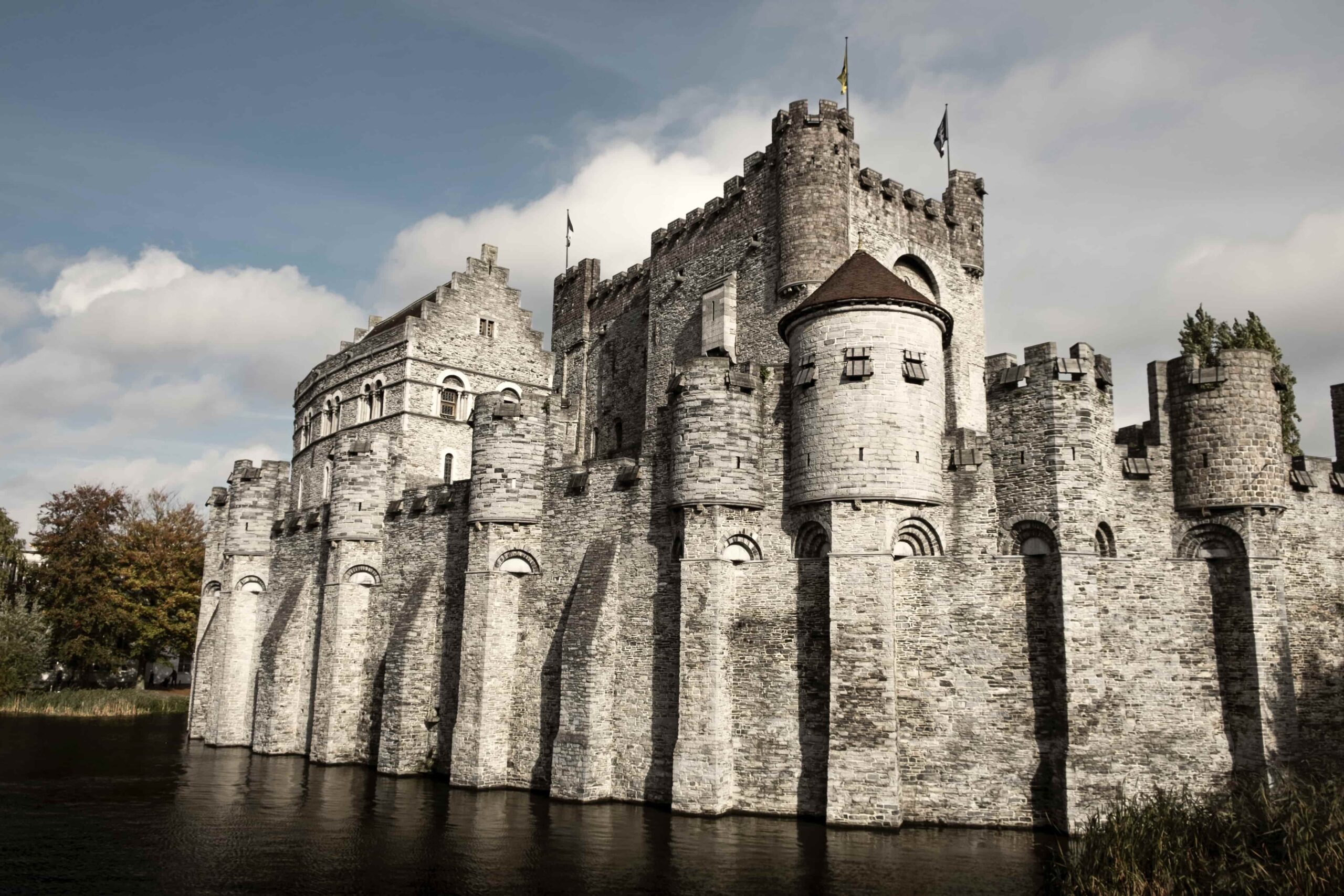
After that, proceed to St. Bavo’s Cathedral. The inside of St. Bavo’s Cathedral is stunning, but it is most renowned for housing the Flemish art piece The Adoration of the Mystic Lamb.
Then admire the Ghent light show. Ghent doesn’t want its enchanted beauty to vanish when the sun goes down–and with a little innovation and some brilliant light displays, it won’t. At night, a string of lights illuminate Ghent, sending beautiful reflections onto the canals below.
Whether you spend the night in Ghent as part of your three-day trip to Belgium or not, we highly recommend staying after dark to view the light displays at their finest!
Stroll through Werregarenstraat in the evening. Werregarenstraat is a street with a vibrant and ever-changing collection of street art that is well worth a brief visit during your three days in Belgium.
You might easily spend the rest of the evening there, perhaps having supper in one of the excellent restaurants.




Day 3
Final day in Brussels
As your three days in Belgium come to an end, go to Brussels for a (literal) taste of the capital city.
Many people consider Brussels to be a dull city, and we can’t say we disagree–especially when compared to Bruges and Ghent.
That being said, it is worthwhile to spend some time investigating it for yourself, and there are some intriguing things to do in Brussels, so we recommend spending half a day seeing the city’s sites and then finishing your vacation to Belgium with a sweet treat–but more on that below.
After breakfast, you should visit the Grand Place (Grote Markt). The only word to describe Brussels’ Grand Place, which is gilded and sparkling, is grandeur.
This is the most iconic of all the locations to visit in Brussels, and a must-see during your 3 days in Belgium!


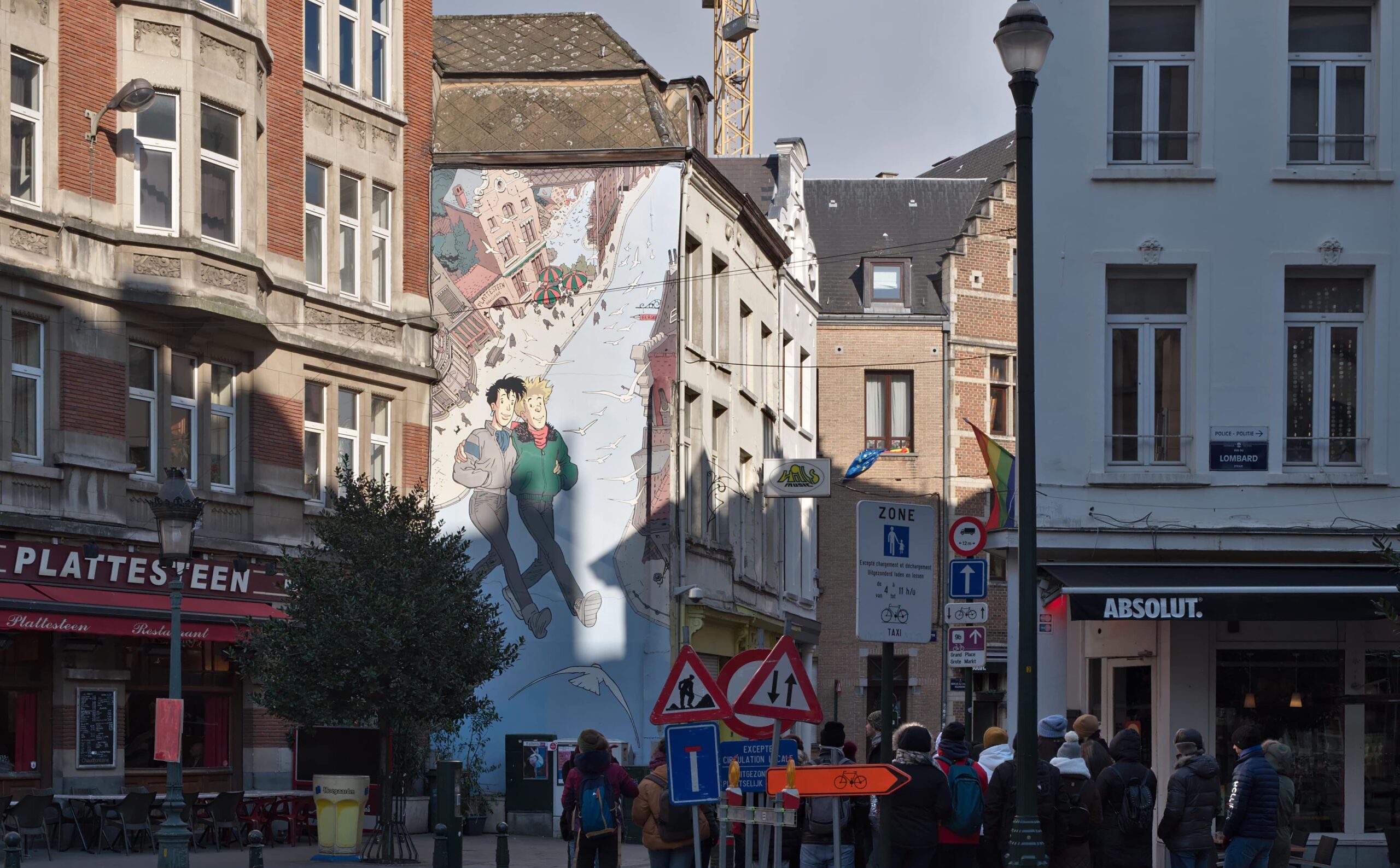
This square really glows with the gold shining off the tops of the buildings — it is one of the most stunning main squares you’ll see in Europe! It is home to Brussels’ Town Hall, multiple guildhalls, and the King’s House (which now houses the Brussels City Museum).
When you’re done with the square, go to Mannekin Pis and scratch your head. If you search for attractions to see in Brussels, you’ll almost certainly come across Mannekin Pis, the 400-year-old monument of a tiny child peeing into the basin of a fountain.
What makes it so popular? No one has any idea (could have something to do with legends). Nevertheless, it’s a 5-minute walk from the Grand Place and worth seeing for the oddity alone… and to see if the statue is dressed up as anything trending at the moment, which it frequently is.
After that, go on a comic book adventure. If you enjoy Belgian comics, particularly The Adventures of Tintin, don’t leave Brussels without visiting the Comic Book Route!
Brussels is graced with hundreds of murals from popular comic books, and locating them is a fun scavenger hunt.
You cannot possibly have visited Belgium without participating in a Belgian Chocolate Workshop!


What better way to end your vacation to Belgium than with a chocolate workshop–aka the ideal opportunity to consume a bunch of chocolate and figure out what your preferences are… while also leaving with your own handcrafted box?
This popular chocolate course will teach you how to make your own tasty chocolates while also teaching you about the history of Belgian chocolate.
Alternatively, if you don’t like chocolate? Consider taking a beer tour! Many people won’t understand why you don’t enjoy chocolate, but if you’d like a different pleasure, a Belgian beer tour is also a great way to end your three-day trip to Belgium!
Day 4
Departure
If you have 4 or 5 days in Belgium rather than 3, you can easily find more fun things to do in Belgium.
The first addition we would recommend is paying your respects at the WWI battlefields near Ypres. You can visit independently, but a tour adds lots of valuable context.
You could also add on a day trip to Antwerp (be sure not to miss the city’s phenomenal train station, Grote Markt, and Steen Castle!).
Of course, there’s no reason to stray far if you don’t want to! Any one of the cities outlined on this 3-day Belgium itinerary could easily captivate you for more than a day.
Whether you depart on day 3 or choose to stay more, this marks your last day in beautiful Belgium. Stroll around if you still have time and then head to the airport or train station, back home, or to your next destination.
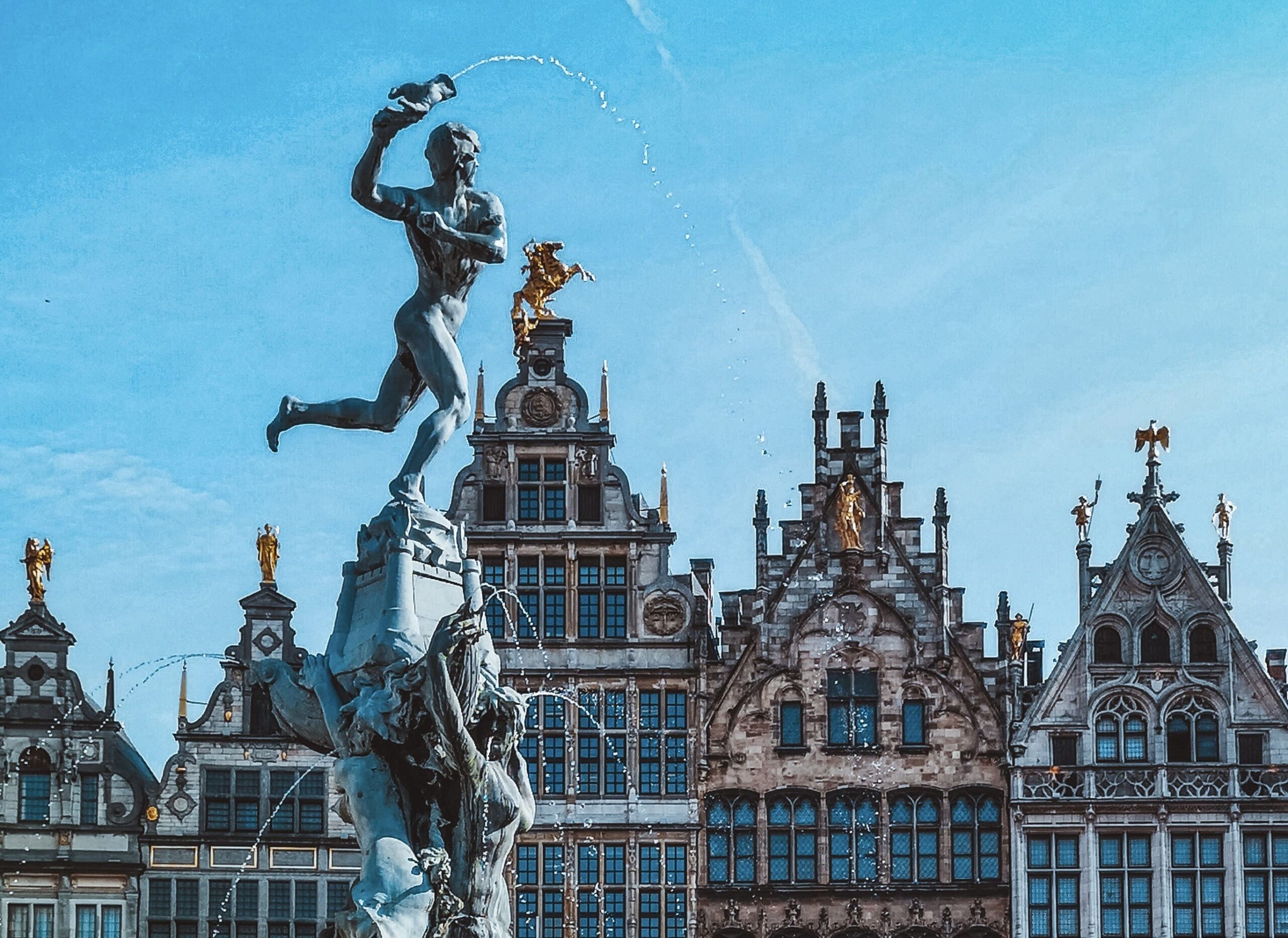

The Most Popular Food in Belgium
Belgian cuisine is often regarded as among the greatest in Europe, with considerable influences from French, German, and Dutch cooks. Indeed, it is frequently remarked that Belgian cuisine is presented in the quantity of German cuisine but with the quality of French cuisine. Although Belgium has been eclipsed by its more popular neighbors, the regional cuisine is enough to tempt any serious tourist to this lovely nation.

Stoofvlees
This sweet and sour steak and ale stew is one of the most popular dishes in the Netherlands, and many families pass down their unique recipes from generation to generation. Beef, rich dark lager, bread, onions, salt, pepper, herbs and spices are common ingredients in most recipes. A long marinating and gradual cooking are essential for the meat’s taste and softness. This meal is traditionally served with frites (French fries), boiled potatoes, noodles, salad or vegetables, and more beer.
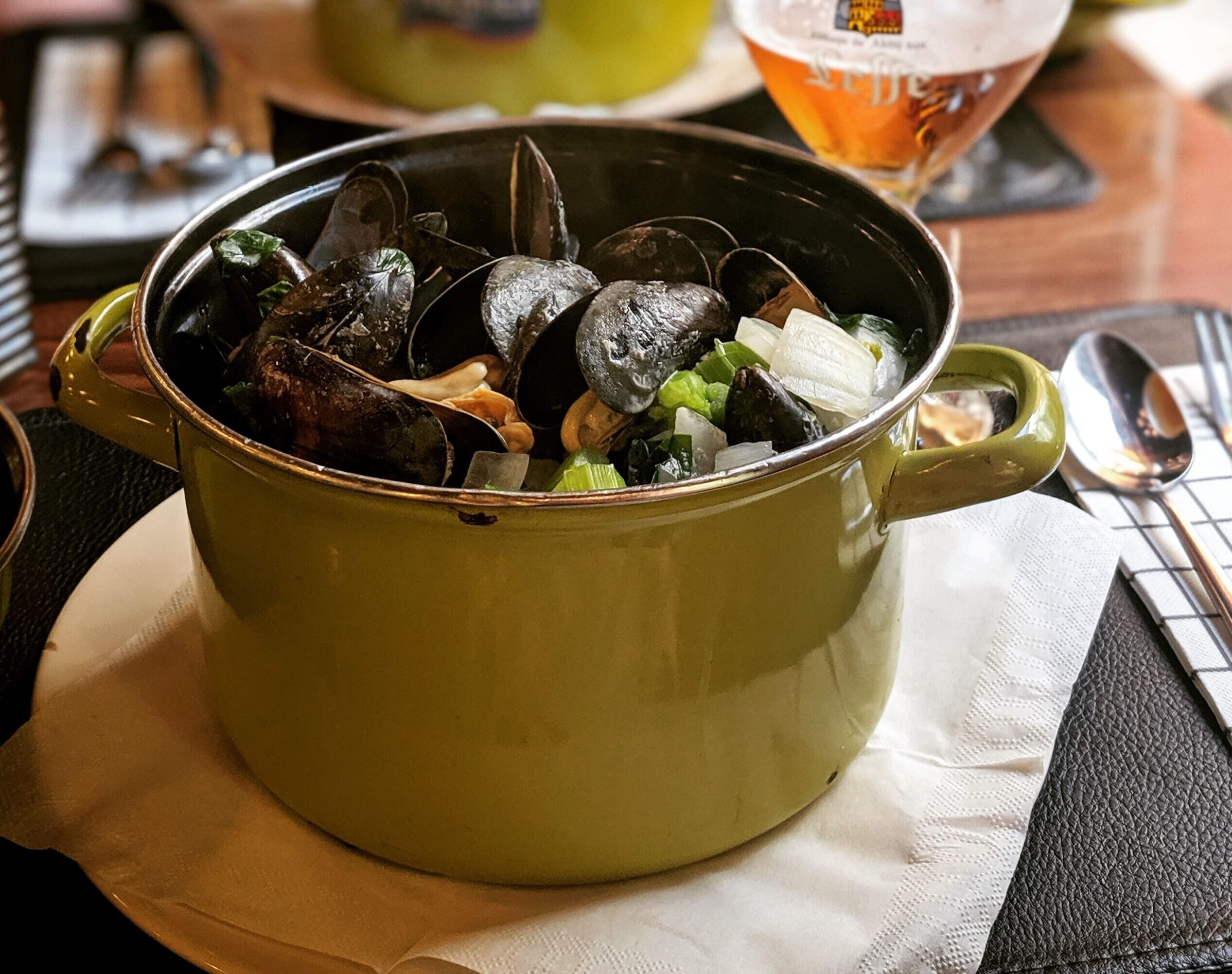
Moules frites
About 30 million tons of moules frites are eaten every year in Belgium – that’s 3kg per person! The traditional accompaniment to mussels is frites which the Belgians are believed to have invented back in 1781. Frites are thicker than French fries and very crisp because, like traditional English chips, you fry them twice.
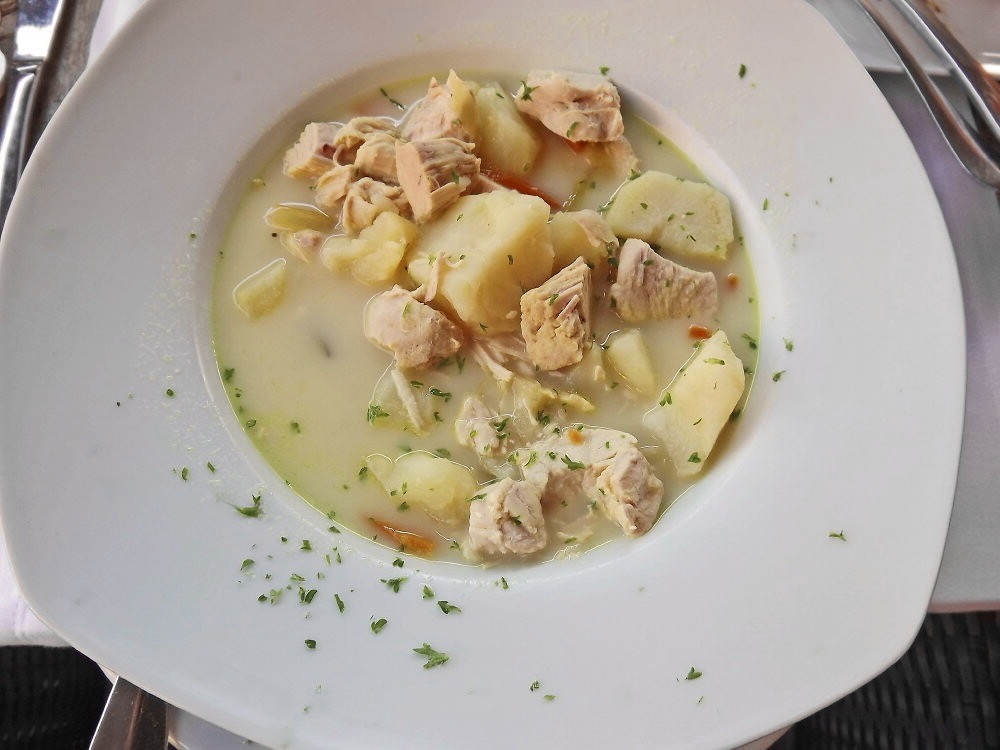
Gentse waterzooi
Gentse waterzooi is a soup-like dish popular across Belgium. The meal is historically cooked using fish like as carp, pike, eel, and bass, although chicken is now more commonly used. The stew is then thickened with eggs, cream, and butter before being served on toasted French bread to soak up the excess.
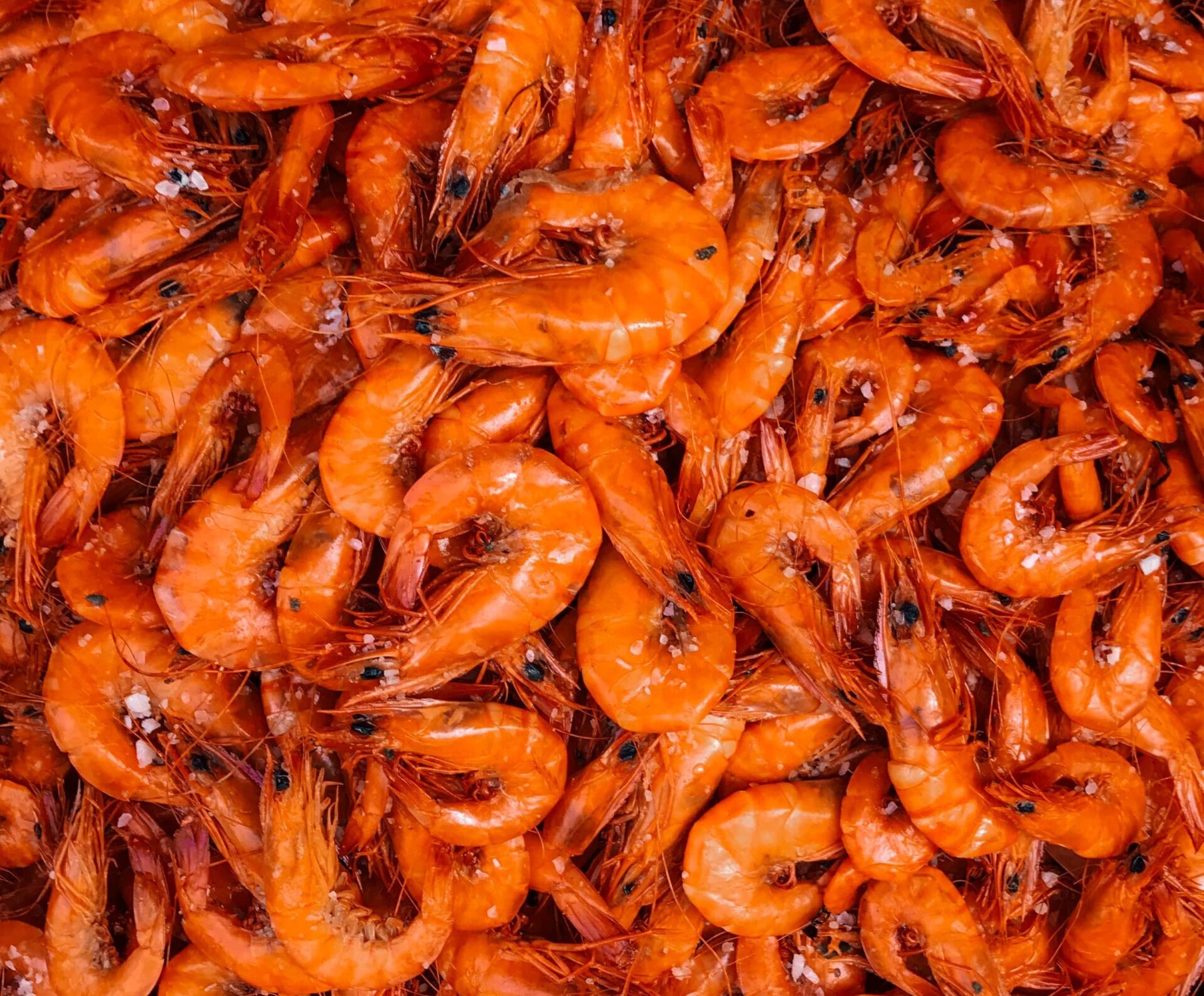
Crevette grise
Tomate crevette (fresh tomatoes packed with prawn salad), crevette croquettes (garnaalkroket in Dutch), or peeled as a snack with beer are some of the ways they are cooked. Fishermen on horseback used to catch shrimp all over the Belgian coast. This is still done at the seaside community of Oostduinkerke, where the event has been designated a UNESCO World Heritage Site.
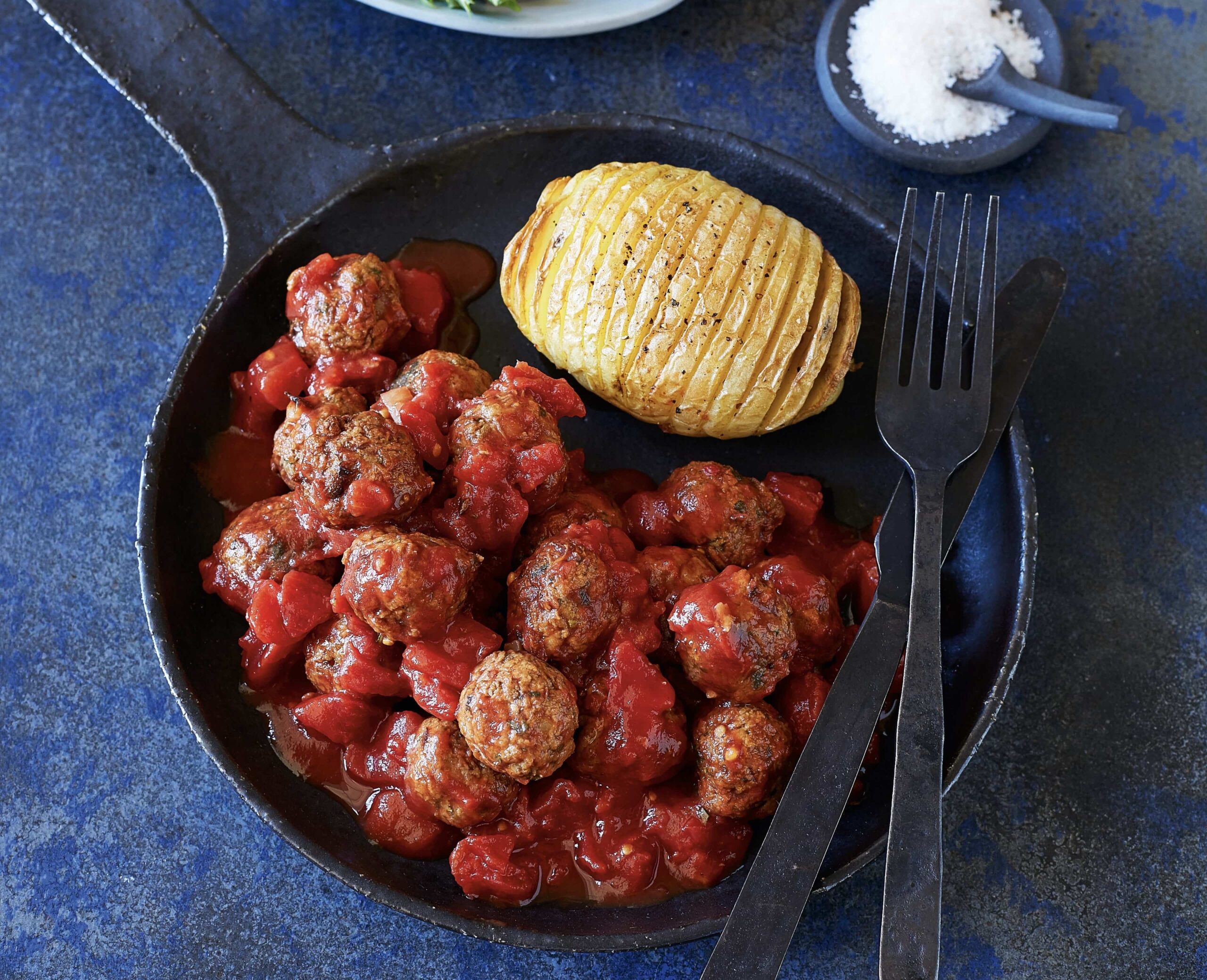
Boulets
Boulets (or meatballs) are a mainstay of Belgian home cooking, and there are several versions available throughout the nation. Balletjes are commonly seen in Flanders wrapped in tomato sauce or Frikadellen-style’met krieken,’ where the meatballs are cooked in butter with Belgian cherry sauce. The dish boulets à la Liégeois is highly popular in the French-speaking area of Brussels.

Belgian Waffles
Waffles are a staple of Belgian cuisine. There are two types of waffles: rectangular and round. The rectangular waffles are less sweet than the round waffles and are covered with chocolate, cream, and other grated fruits. The other variety is smaller and contains sugar crystals, making it sweeter. This may be found practically anywhere, with many regions having a distinct flavor.
What's the Travel Budget for Belgium?
Flights
- Flights start at roughly $50 from nearby countries. Tickets however on average cost around $500 and can cost more depending on which class and from which country you depart from.
Accommodation
- Nomad Backpacking style travelers can expect to spend around $500 for a week
- Budget travelers can expect to spend around $700 for a week
- Mid-range travelers can expect to spend around $1000 for a week
- Luxury travelers can expect to spend around $1600 for a week
Food Budget (Three meals and drinks)
- Nomad Backpacking style travelers can expect to spend around $25 per person per day
- Budget travelers can expect to pay around $40 per person per day
- Mid-range travelers on average would cost $50 to $75 per person per day
- Luxury travelers can expect to pay around $100 to $140 per person per day
Overall Budget Styles (Not including Flights, Tours, Transportation, or Car Rental)
- Nomad Backpacking style travelers can expect to spend around $700 for a week
- Budget travelers can expect to spend around $1000 for one person for a week
- Mid-range travelers can expect to spend around $1550 for one person for a week
- Luxury travelers can expect to spend around $2700 for one person for a week
Flights
- Flights start at roughly $50 from nearby countries. Tickets however on average cost around $500 and can cost more depending on which class and from which country you depart from.
Accommodation
- Nomad Backpacking style travelers can expect to spend around $500 for a week
- Budget travelers can expect to spend around $700 for a week
- Mid-range travelers can expect to spend around $1000 for a week
- Luxury travelers can expect to spend around $1600 for a week
Food Budget (Three meals and drinks)
- Nomad Backpacking style travelers can expect to spend around $25 per person per day
- Budget travelers can expect to pay around $40 per person per day
- Mid-range travelers on average would cost $50 to $75 per person per day
- Luxury travelers can expect to pay around $100 to $140 per person per day
Overall Budget Styles (Not including Flights, Tours, Transportation, or Car Rental)
- Nomad Backpacking style travelers can expect to spend around $700 for a week
- Budget travelers can expect to spend around $1000 for one person for a week
- Mid-range travelers can expect to spend around $1550 for one person for a week
- Luxury travelers can expect to spend around $2700 for one person for a week
Flights
- Flights start at roughly $50 from nearby countries. Tickets however on average cost around $500 and can cost more depending on which class and from which country you depart from.
Accommodation
- Nomad Backpacking style travelers can expect to spend around $500 for a week
- Budget travelers can expect to spend around $700 for a week
- Mid-range travelers can expect to spend around $1000 for a week
- Luxury travelers can expect to spend around $1600 for a week
Food Budget (Three meals and drinks)
- Nomad Backpacking style travelers can expect to spend around $25 per person per day
- Budget travelers can expect to pay around $40 per person per day
- Mid-range travelers on average would cost $50 to $75 per person per day
- Luxury travelers can expect to pay around $100 to $140 per person per day
Overall Budget Styles (Not including Flights, Tours, Transportation, or Car Rental)
- Nomad Backpacking style travelers can expect to spend around $700 for a week
- Budget travelers can expect to spend around $1000 for one person for a week
- Mid-range travelers can expect to spend around $1550 for one person for a week
- Luxury travelers can expect to spend around $2700 for one person for a week
Flights
- Flights start at roughly $50 from nearby countries. Tickets however on average cost around $500 and can cost more depending on which class and from which country you depart from.
Accommodation
- Nomad Backpacking style travelers can expect to spend around $500 for a week
- Budget travelers can expect to spend around $700 for a week
- Mid-range travelers can expect to spend around $1000 for a week
- Luxury travelers can expect to spend around $1600 for a week
Food Budget (Three meals and drinks)
- Nomad Backpacking style travelers can expect to spend around $25 per person per day
- Budget travelers can expect to pay around $40 per person per day
- Mid-range travelers on average would cost $50 to $75 per person per day
- Luxury travelers can expect to pay around $100 to $140 per person per day
Overall Budget Styles (Not including Flights, Tours, Transportation, or Car Rental)
- Nomad Backpacking style travelers can expect to spend around $700 for a week
- Budget travelers can expect to spend around $1000 for one person for a week
- Mid-range travelers can expect to spend around $1550 for one person for a week
- Luxury travelers can expect to spend around $2700 for one person for a week
If you want to know what to pack, read this list below:
- This is a casual country that can get extremely cold, dress accordingly
- Raincoat or Light Waterproof Jacket
- Hiking Boots or Sturdy Sneakers (Shoes You Don’t Mind Getting Wet)
- Sunscreen
- Insect Protection – Repellent and Clothing
- Sunglasses and Sun Hat
- Water Shoes
- Beach Towels/Sarong
- Dry Bag
- Money Belt or Cross Bag
- Portable Medical Kit
- Flashlight or Headlamp
- Copies of your passport.
- Get all the needed vaccinations before traveling
- A power bank is a must in any travel.
- Always have some cash with you just in case there are no ATMs and if you are dealing with a business that solely accepts cash
- Get yourself an adapter for your gadgets
- 1 toothbrush
- 1 tube of toothpaste
- 1 razor
- 1 package of dental floss
- 1 small bottle of shampoo
- 1 small bottle of shower gel
- 1 towel
- Deodorant
- Band-Aids
- Hydrocortisone cream
- Antibacterial cream
- Earplugs
- Tylenol
- Hand sanitizer (germs = sick = bad holiday)
- A key or combination lock
- Zip-lock bags
- Plastic bags (great for laundry)
- Universal charger/adaptor
- LifeStraw (A water bottle with a purifier)
- 1 dry shampoo spray & talc powder
- 1 hairbrush
- Makeup you use
- Hairbands & hair clips
- Feminine hygiene products
Clothing For Boys
- 1 pair of jeans or khaki pants
- 1 pair of shorts
- 1 bathing suit
- 5 T-shirts
- 1 long-sleeved T-shirt
- 1 pair of flip-flops
- 1 pair of sneakers
- 6 pairs of socks
- 5 pairs of boxer shorts
Clothing For Girls
- 1 swimsuit
- 1 sarong
- 1 pair of stretchy jeans
- 1 pair of leggings
- 2-3 long-sleeve tops
- 2-3 T-shirts
- 3-4 spaghetti tops
- 1 light cardigan
Want to plan your own trip, here are some of the best resources that can help you
- Skyscanner – They search small websites and budget airlines that larger search sites tend to miss. They are hands down the number one place to start.
- Momondo – This is another favorite flight search engine because they search such a wide variety of sites and airlines. Always check here too.
- Booking.com – The best all-around booking site that constantly provides the most affordable and lowest rates. They have the widest selection of budget accommodation.
- Couchsurfing – This website allows you to stay on people’s couches or spare rooms for free. It’s a great way to save money while meeting locals who can tell you the ins and outs of their city. The site also lists events you can attend to meet people (even if you’re not staying with someone).
- Intrepid Travel – If you want to do group tours, go with Intrepid. They offer good small group tours that use local operators and leave a small environmental footprint.
- Grassroots Volunteering – For volunteering, Grassroots Volunteering compiles a list of good local volunteer organizations that keep the money within the community.
- Get Your Guide – Get Your Guide is a huge online marketplace for tours and excursions. They have tons of tour options available in cities all around the world, including everything from cooking classes, walking tours, street art lessons, and more! It has the world’s largest collection of things to do with more than 30,000 activities in 7500 destinations.
- SafetyWing – Safety Wing offers convenient and affordable plans tailored to digital nomads and long-term travelers. They have cheap monthly plans, great customer service, and an easy-to-use claims process that makes it perfect for those on the road.
- Trip Advisor: Check the reviews and then book your accommodation. TripAdvisor is where you go when you want to compare prices with multiple accommodation providers.
- VRBO: is the main search engine to use when you are looking for a home or apartment rental. It can sometimes be cheaper than hotels and it is the best way to stay in areas that offer a more local feel.
- Hostelworld: With one of the largest databases of hostels in the world, Hostelworld is the go-to site when you are looking for budget accommodation.
- Rome 2 Rio: If you want to see how to get somewhere by plane, train, bus, ferry, or car Rome2Rio lays it all out for you as well as related costs.
- World Nomads Insurance: When traveling you should always have travel insurance. We have found the best bang for your buck is by far World Nomads.
Final Thoughts on Belgium
Belgium has a deep cultural history, lovely architecture, charming canals, and natural beauty, so rich making it worth traveling to. Would you?
If you’ve been to Belgium let us know how your trip was in the comments below.